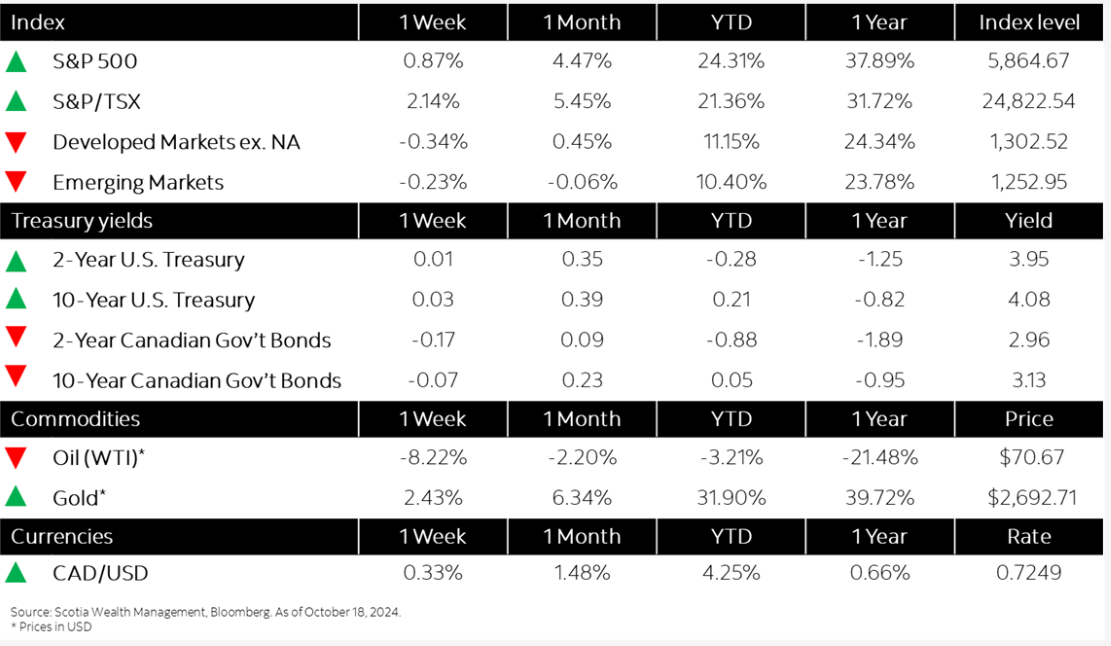
Market Watch: October 18
This week’s highlights
- Cautious optimism as positive economic signals abound
- U.S., Canadian rate cut forecasts continue to diverge
- Canada’s inflation rate falls to 1.6 per cent in September
- Strong discretionary spending lifts U.S. retail sales in September
- European Central Bank cuts interest rates again as eurozone economy stagnates
- In the news: Boeing seeks new financing and cuts jobs to stabilize finances
Week in review
Cautious optimism as positive economic signals abound



